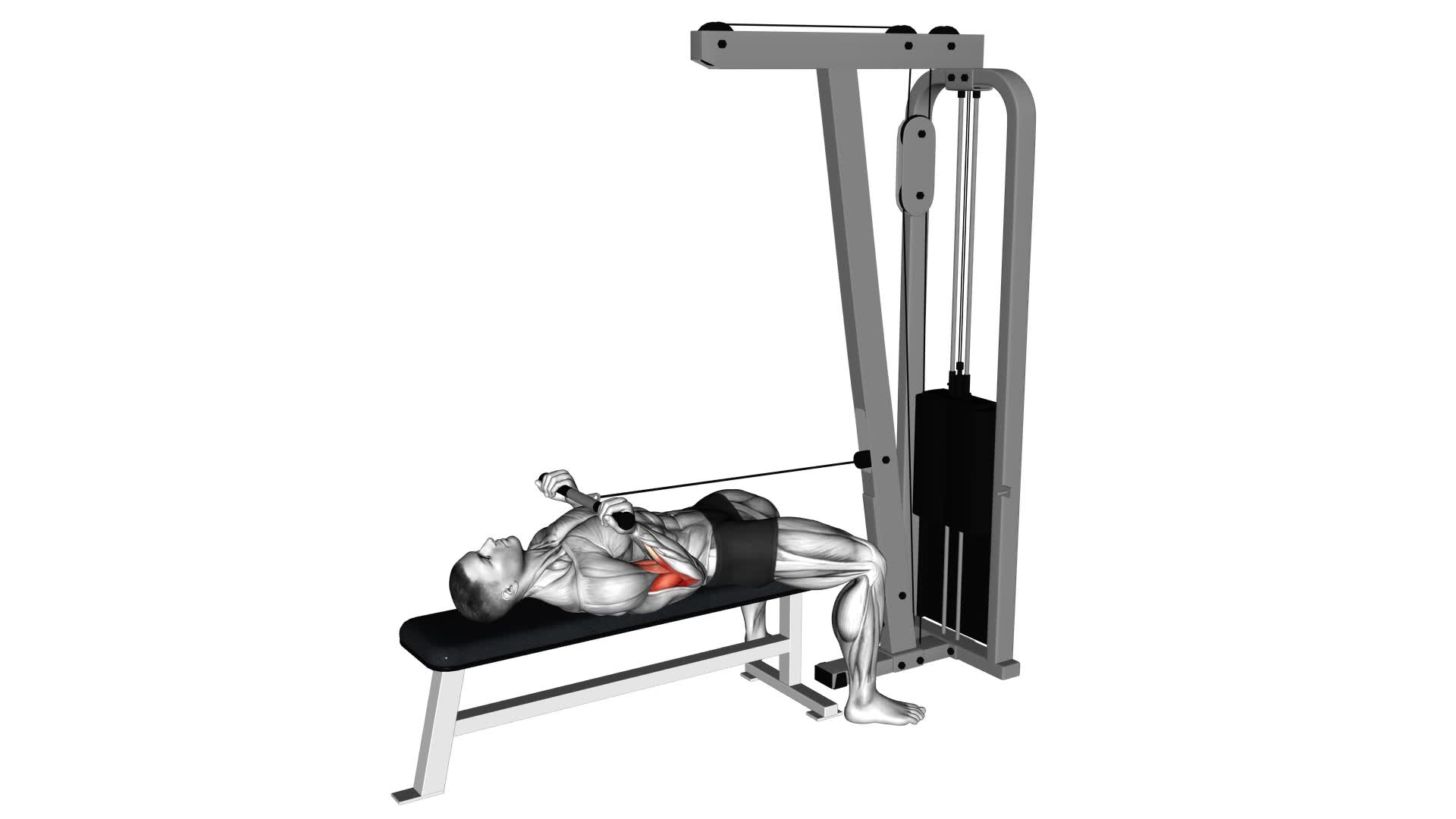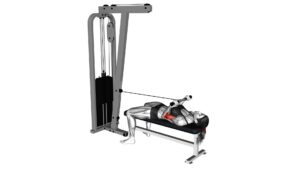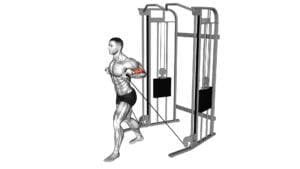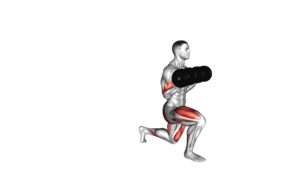Cable Lying Bicep Curl – Video Exercise Guide & Tips

Looking to tone your biceps? Try the cable lying bicep curl! This exercise targets your bicep muscles, helping to build strength and definition. With just a cable machine, you can perform this exercise at the gym or in the comfort of your own home.
Watch This Exercise Video
In this video exercise guide, you'll learn the proper form and technique, as well as variations for different fitness levels. Say goodbye to flabby arms and hello to sculpted biceps with the cable lying bicep curl!
Key Takeaways
- The cable lying bicep curl targets the biceps muscles for strength and definition.
- It allows for adjustable resistance, providing a progressive challenge.
- The exercise provides constant tension throughout the movement, maximizing its effectiveness.
- Variations of the exercise can be used to target different areas of the biceps.
Benefits of the Cable Lying Bicep Curl
The cable lying bicep curl offers you a range of benefits for strengthening and toning your biceps. This exercise specifically targets the biceps muscles, helping to increase their size and definition. By using the cable machine, you can adjust the resistance to suit your fitness level, allowing you to challenge yourself and continue to progress over time. Additionally, the cable lying bicep curl provides a constant tension throughout the movement, ensuring that your muscles are engaged throughout the entire range of motion.
One of the key benefits of the cable lying bicep curl is the ability to perform variations of the exercise. By using different attachments, such as a straight bar or an EZ bar, you can target different areas of the biceps and add variety to your workout routine. Additionally, you can change the grip width to emphasize different muscles within the biceps, such as the inner or outer heads.
Incorporating the cable lying bicep curl into your workout routine can lead to increased strength, muscle definition, and overall arm development. It's an effective exercise for anyone looking to improve their bicep strength and size.
Now that you know the benefits of the cable lying bicep curl, let's move on to discussing the equipment needed for the exercise.
Equipment Needed for the Exercise
To perform the Cable Lying Bicep Curl, you'll need some essential equipment:
- A cable machine with a low pulley attachment
- A bench
If you don't have access to a cable machine, you can use resistance bands or dumbbells as alternatives.
It's important to ensure that the equipment you're using is in good condition and properly set up to avoid any potential safety hazards.
Essential Equipment for Exercise
You'll need a cable machine's attachment for this exercise. The cable lying bicep curl targets the biceps and helps strengthen and tone your arms.
While this exercise specifically requires a cable machine, there are alternative exercises you can do if you don't have access to one. For example, you can use resistance bands or dumbbells to perform bicep curls. These cost-effective equipment options can provide similar benefits and allow you to work your biceps effectively.
Resistance bands are portable and versatile, making them a great option for home workouts or when you're on the go. Dumbbells are also a popular choice and can be used for various exercises targeting different muscle groups.
Alternatives to Cable Equipment
If you don't have access to a cable machine, there are alternative equipment options you can use for the cable lying bicep curl exercise. Here are some alternatives to cable equipment that you can consider:
- Resistance Bands: Resistance bands are a great alternative to cables as they provide similar resistance and can be easily adjusted to your desired level of intensity.
- Dumbbells: Dumbbells can be used to perform bicep curls in a lying position. Simply lie on a bench or the floor and hold a dumbbell in each hand, then curl your arms up towards your shoulders.
- Barbell: Barbell curls can also be done in a lying position. Lie on a bench with a barbell in your hands, palms facing up, and curl the barbell up towards your shoulders.
- Kettlebells: Kettlebells can be used for lying bicep curls as well. Hold a kettlebell in each hand, lie on a bench or the floor, and curl your arms up.
- Bodyweight: If you don't have any equipment available, you can still perform lying bicep curls using just your bodyweight. Lie on a bench or the floor and perform a curling motion with your arms.
These alternative options allow you to still target your biceps effectively without the need for a cable machine. Incorporating resistance band workouts and other equipment variations into your cable exercises can add variety to your routine and help you achieve your fitness goals.
Safety Considerations for Equipment
What equipment is necessary for the cable lying bicep curl exercise to ensure safety?
When performing the cable lying bicep curl, it's important to have the right equipment to prevent injuries and ensure a safe workout. The main equipment needed for this exercise includes a cable machine with an adjustable weight stack, a straight bar attachment, and a bench.
The cable machine provides the resistance needed to target the biceps effectively. Make sure the weight stack is securely locked in place to avoid any accidents during the exercise.
The straight bar attachment allows for a comfortable grip and proper form. Lastly, a stable and sturdy bench is essential to support your body while lying down and maintaining proper alignment.
With the right equipment, you can perform the cable lying bicep curl safely and effectively.
Now let's move on to discussing the proper form and technique for the cable lying bicep curl.
Proper Form and Technique for the Cable Lying Bicep Curl
To execute the cable lying bicep curl with proper form and technique, position yourself on the bench. Follow these steps to ensure you're performing the exercise correctly:
- Lie flat on your back on the bench, with your feet flat on the ground and your knees slightly bent.
- Grasp the cable handles with an underhand grip, keeping your palms facing up.
- Extend your arms fully, allowing the cables to pull your hands towards the floor.
- Keeping your upper arms stationary, exhale and curl the handles towards your shoulders, contracting your biceps.
- Inhale and slowly lower the handles back to the starting position, fully extending your arms.
By maintaining proper form and technique, you can maximize the benefits of the cable lying bicep curl.
It's important to avoid these common mistakes:
- Using too much weight, which can compromise your form and increase the risk of injury.
- Swinging your body or using momentum to lift the handles, instead of relying on your bicep muscles.
- Allowing your elbows to flare out, which shifts the focus away from the biceps.
- Failing to fully extend your arms at the bottom of the movement, which reduces the range of motion and limits the effectiveness of the exercise.
- Not controlling the weight on the way down, which prevents you from fully engaging your biceps throughout the entire exercise.
Variations and Modifications for Different Fitness Levels
To modify the cable lying bicep curl for different fitness levels, adjust the weight and repetitions according to your capabilities. There are several variations and modifications you can make to this exercise to cater to your specific needs and goals.
For beginners or individuals with lower strength levels, it's recommended to start with lighter weights and focus on performing the exercise with proper form and technique. Gradually increase the weight as you build strength and feel more comfortable.
For those looking to add more challenge to the exercise, you can increase the weight or resistance used. This will help to further strengthen and tone your biceps.
Another modification you can make is to vary the grip used during the exercise. By using a wider grip, you can target different areas of the biceps and increase the overall effectiveness of the exercise.
Additionally, you can incorporate supersets or drop sets into your cable lying bicep curl routine. Supersets involve performing a set of bicep curls immediately followed by another exercise targeting a different muscle group, while drop sets involve decreasing the weight used as you fatigue, allowing for more repetitions to be performed.
Common Mistakes to Avoid During the Exercise
One common mistake to avoid during the exercise is using improper form and technique. To ensure that you're performing the cable lying bicep curl correctly and effectively, here are some common mistakes to avoid:
- Using momentum: Swinging the weights or using your body to lift the cable can take away the focus from your biceps and reduce the effectiveness of the exercise. Remember to keep your body still and use controlled movements.
- Not fully extending the arms: It's important to fully extend your arms during the negative phase of the exercise to engage your biceps fully. Avoid stopping halfway or bending your elbows too much.
- Lifting too heavy: Using weights that are too heavy can compromise your form and increase the risk of injury. Start with lighter weights and gradually increase as you build strength and maintain proper form.
- Relying on the back muscles: Sometimes, people tend to use their back muscles instead of their biceps to lift the weight. Keep your back flat against the bench and focus on contracting your biceps throughout the movement.
- Not maintaining tension: To maximize the effectiveness of the exercise, maintain tension on your biceps throughout the entire range of motion. Avoid resting or pausing at the top or bottom of the movement.
Tips to Maximize Your Results With the Cable Lying Bicep Curl
Maximize your results with the cable lying bicep curl by incorporating proper breathing techniques. Breathing plays a crucial role in any exercise, including the cable lying bicep curl. To maximize gains, exhale as you curl the weight up and inhale as you lower it back down. This helps engage the core muscles and stabilize your body, allowing you to lift heavier weights and target the biceps more effectively.
In addition to proper breathing, the best time to perform the cable lying bicep curl is during your arm workout routine. This exercise specifically targets the biceps, so it's ideal to include it when you're focusing on developing your arm muscles. It can be performed as a standalone exercise or as part of a circuit training routine.
To further maximize your results, it's important to maintain proper form throughout the exercise. Keep your back flat against the bench, engage your core, and avoid using momentum to lift the weight. Control the movement and focus on squeezing your biceps at the top of the curl.
Remember to start with a weight that challenges you but allows for proper form. Gradually increase the weight as you get stronger to continue maximizing your gains with the cable lying bicep curl.
Frequently Asked Questions
How Many Sets and Reps Should I Do for the Cable Lying Bicep Curl?
For the cable lying bicep curl, it's important to find the right balance between sets and reps. The number of sets and reps you should do depends on your fitness level and goals.
Generally, it's recommended to start with 3-4 sets of 8-12 reps. This will help build strength and muscle endurance. However, you can also vary the sets and reps to challenge your muscles in different ways.
Remember to listen to your body and adjust accordingly for optimal results.
Can I Use Dumbbells Instead of a Cable Machine for This Exercise?
Yes, you can definitely use dumbbells instead of a cable machine for the cable lying bicep curl exercise. Using dumbbells for this exercise has its own benefits.
Dumbbell exercises for biceps help in improving muscle balance and coordination, as well as targeting the biceps from different angles. It also allows for a greater range of motion and can be more challenging than using a cable machine.
Is It Necessary to Warm up Before Performing the Cable Lying Bicep Curl?
Yes, it's necessary to warm up before performing the cable lying bicep curl. Warming up helps to increase blood flow to your muscles, making them more flexible and reducing the risk of injury.
It also prepares your body for the exercise and improves your overall performance. Common mistakes to avoid while performing the cable lying bicep curl include using too much weight, swinging your body, and not maintaining proper form.
Taking the time to warm up properly can greatly benefit your workout.
Can I Do This Exercise if I Have a History of Shoulder Injuries?
If you have a history of shoulder injuries, it's important to prioritize shoulder injury prevention when choosing exercises.
The cable lying bicep curl may not be the best choice for you, as it can put strain on the shoulders. However, there are alternative exercises that can help you target your biceps without aggravating your shoulder.
It's always best to consult with a professional trainer or physical therapist for personalized advice and exercise recommendations.
How Often Should I Incorporate the Cable Lying Bicep Curl Into My Workout Routine?
To maximize the benefits of cable exercises, it's important to incorporate the cable lying bicep curl into your workout routine regularly. This exercise targets your biceps and helps build strength and definition in your arms.
Conclusion
In conclusion, the cable lying bicep curl is an effective exercise for targeting and strengthening the biceps muscles. By using the cable machine, you can achieve a full range of motion and target the biceps from a different angle.
Remember to maintain proper form and technique to avoid injury and maximize your results. With variations and modifications available, individuals of different fitness levels can benefit from this exercise.
Incorporate the cable lying bicep curl into your workout routine for stronger and more defined biceps.

Author
Years ago, the spark of my life’s passion ignited in my mind the moment I stepped into the local gym for the first time. The inaugural bead of perspiration, the initial endeavor, the very first surge of endorphins, and a sense of pride that washed over me post-workout marked the beginning of my deep-seated interest in strength sports, fitness, and sports nutrition. This very curiosity blossomed rapidly into a profound fascination, propelling me to earn a Master’s degree in Physical Education from the Academy of Physical Education in Krakow, followed by a Sports Manager diploma from the Jagiellonian University. My journey of growth led me to gain more specialized qualifications, such as being a certified personal trainer with a focus on sports dietetics, a lifeguard, and an instructor for wellness and corrective gymnastics. Theoretical knowledge paired seamlessly with practical experience, reinforcing my belief that the transformation of individuals under my guidance was also a reflection of my personal growth. This belief holds true even today. Each day, I strive to push the boundaries and explore new realms. These realms gently elevate me to greater heights. The unique combination of passion for my field and the continuous quest for growth fuels my drive to break new ground.







